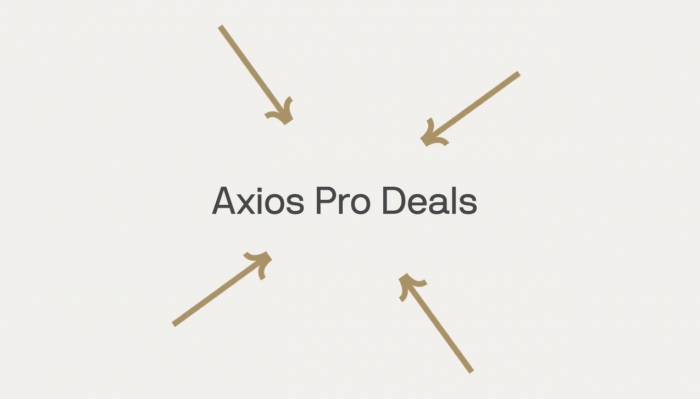
The same week Axios celebrated its five-year anniversary, the news startup known for its rapid-fire editorial style has launched Axios Pro, a subscription service focused on deals in financial technology, health technology, and retail.
Axios has been hinting at plans to launch a premium subscription product since the very beginning. All the way back in 2016, Axios founder Jim VandeHei said he couldn’t imagine being “super intrigued with a subscription less than $10,000” for his new venture. The newly-debuted Axios Pro costs quite a bit less than that — $600/year for one newsletter or $1,800/year for all Pro newsletters — but it’s still not priced for the causal reader. (There’s a free two-week trial, but no monthly payment option.)
So who is Axios Pro for? A short promo video offered some clues.
“Things are happening in the world of deals and dealmakers. And there’s never enough time to keep up with every company, transaction, announcement, or whatever. It’s just exhausting,” says Pro Rata newsletter author Dan Primack. “We have a new product to help fix that.”
If you’re “a venture capitalist, private equity investor, banker, trader, founder, executive, anyone who cares about deals,” he continues, Axios Pro was made for you.
🚨 BREAKING:
Axios Pro is open for business! https://t.co/IyVi2nIA72 pic.twitter.com/8by1zlqQvd
— Dan Primack (@danprimack) January 10, 2022
Axios publisher Nick Johnston said the success of Primack’s Pro Rata newsletter — which has more than 200,000 free subscribers — helped nudge Axios toward this version of a premium product.
“Pro Rata, remember, those emails come from Dan’s email address and if you hit reply, it goes to Dan,” Johnston said. “We’ve created a really great relationship with our readers and so I think on that personal level, we thought this would be better built at a consumer price point — hundreds of dollars versus thousands of dollars.”
With an enterprise subscription product like Politico Pro (which starts at thousands per year) or Bloomberg Terminal (more), “you don’t take out your personal credit card and swipe it to get one of those,” Johnston noted. Axios Pro subscribers are likely to be professionals in the fintech, health tech, and retail worlds but Johnston thinks it’ll make a difference they won’t have to call up their procurement officer or CFO in order to subscribe.
In addition to the three initial newsletters, Axios plans to launch “Media Deals” and “Climate Deals” as Axios Pro products. The team is starting with two reporters per beat, plus two dedicated editors.
Axios, which currently has 2.4 million subscribers across 34 free newsletters, declined to say what percentage of free subscribers they hope to convert to Axios Pro subscriptions but Johnston said he was keeping his eyes on a number of coverage areas — including healthcare policy — that could yield future Pro products.
“Across the newsroom, we’ll look at the newsletters that we have that cover topics very broadly and identify places where, if we invested more and went deeper on more specific topics, would become a product that readers would pay for,” Johnston said.
The first editions of the newsletter, which went out Wednesday morning, will feel familiar to current Axios readers. There’s bolded text, bullet points, emojis, and headers like “1 big thing,” “why it matters,” and “by the numbers.” The Pro newsletters also feature advertising and a few personal touches, like retail reporter Richard Collings including a photo of a pregame ceremony for the Kansas City Chiefs his family participated in.
Johnston said that part of the fun — and challenge — of launching something new at Axios was that their “startup mentality” allows the team to continually tweak their news products.
“For journalism, there’s a qualitative element to it. You read the newsletter: Is this good? Is this telling me something I don’t know? You also look at, what are the open rates? What are the reader responses? How is this journalism traveling in the ecosystem of the beats covered?” Johnston said. “For Pro, we’ll have additional datasets. How many people are signing up? How many people are trialing it? How many people are then paying after they trial it — and then renewing a year in? We’ll go through all those things and then look to turn the knob. Is the price point correct? Is the cadence of the newsletter correct? Have we narrowed the coverage areas correctly? Have we built an ecosystem for subscribers around that — for events or additional engagement? I think those are all things we’ll probably spend the next six months to a year figuring out, even as we’re launching new ones.”